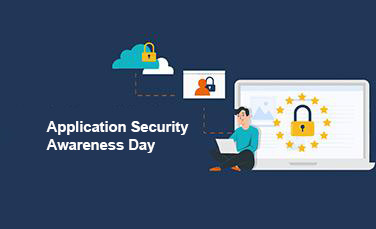
Cybersecurity is increasingly becoming a significant challenge for both public and private organizations, as well as individuals. The rise and sophistication of cyberattacks have become a top concern for decision-makers and users at all levels.
In this context of escalating cyber threats, the application environment is one of the prime targets for hackers. To shed light on this issue, and as a continuation of the actions taken in 2021, the DGSSI organized an awareness day on application security. The opening remarks for this day were delivered by Mr. Abdellah BOUTRIG and Mr. Sidi Mohammed DRISSI MELYANI, respectively Director of Assistance, Training, Control, and Expertise at the DGSSI and General Director of the Digital Development Agency. Indeed, the DGSSI and the ADD work closely together to promote a culture of secure development in Morocco.
Held in a hybrid format during the morning of April 12, 2022, this day saw the participation of over 480 individuals representing various sectors from both the public and private domains. The event was led by high-level international experts and professionals with years of experience, particularly in the field of application security.
The program of the day highlighted some best security practices to adopt during software development, with a particular focus on the OWASP Application Security Verification Standard (ASVS) and software testing fundamentals.
The OWASP ASVS provides a basis for testing technical security controls of web applications and offers developers a list of requirements for secure development. It comprises a total of 286 controls across 14 verification categories, adopting an approach based on function families and level of requirements. It offers three levels of control based on the required security level, with the highest level requiring a thorough analysis of architecture, code, and testing at all levels.
Regarding software testing, it should be noted that, according to ANSI/IEEE 1059, software testing is the process of evaluating a software product to determine whether it meets specified requirements. The testing process evaluates software product features for missing requirements, bugs or errors, security, reliability, and performance constraints.
Generally, tests are classified into three categories:
Additionally, the day featured two presentations on software testing delivered by representatives from the Moroccan and French Software Testing Committees, emphasizing the importance of these tests in terms of:
The presentations also highlighted the fundamentals of security testing, through the presentation of the ISTQB certification process. Through their complementary missions focused on implementing secure systems and raising awareness of digital and technical standards for digital products and services, the DGSSI and the ADD are already aware of this issue. To further strengthen the available resources for public and private administrations, as well as critical infrastructures, and enable them to conduct recommended tests during the development cycle, they have adopted an application security verification framework.
This application security verification framework, expertly presented by OWASP, incorporates several security standards, including NIST 800-63-3 guidelines on digital identity, NIST SP 800-57 recommendations on key management, OWASP Top 10 2021, OWASP Proactive Controls 2018, sections 6.5 of PCI-DSS v3.2.1, and mapping to CWE. It is primarily based on ASVS 4.0.3 version published in October 2021 by the OWASP community and applies to all software development models. It aims to achieve two major objectives:
The application security verification framework includes three security verification levels. Level three represents the highest assurance level. The appropriate verification level to be adopted will depend on:
These levels are defined as follows:
Based on risk analysis and business requirements, each organization must determine the appropriate level of requirement. Furthermore, the awareness day presented several solutions capable of making improvements and mechanisms to support the implementation of the application security verification framework and facilitate the automation of the development process. Among the solutions presented that could add value in terms of implementing security rules at the SDLC level are the SKF Framework and DefectDojo API.

To report any criminal digital content, including threats to the security of individuals and groups, praise or incitement of terrorism, and violations of the rights and freedoms of children, please use the following platform : www.e-blagh.ma
DGSSI2025 All rights reserved